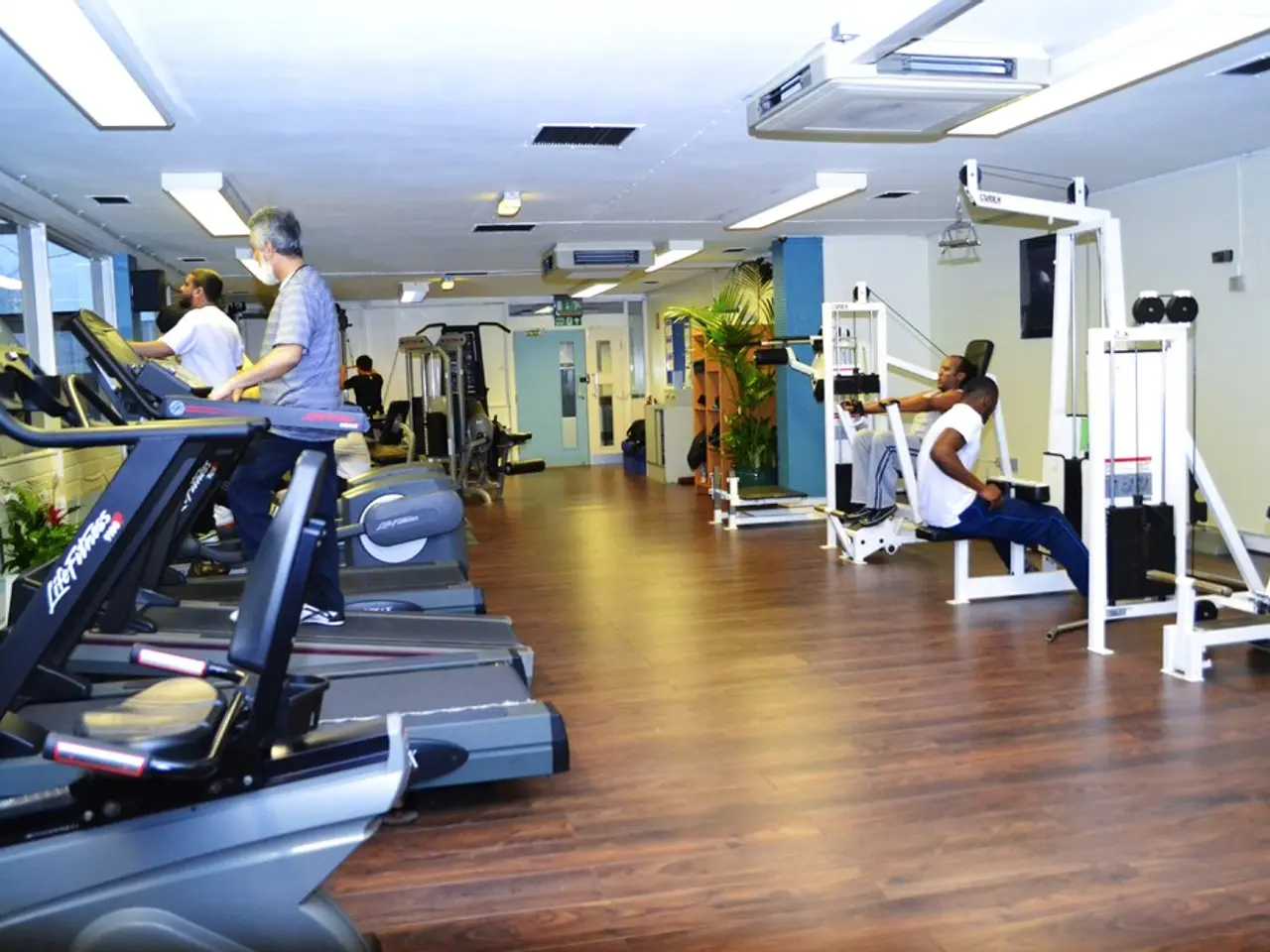Age Limits for Gym-Going: A Detailed Overview of Exercising at Different Stages of Life
Staying active and maintaining a healthy lifestyle is essential for people of all ages. When it comes to gym workouts, the focus should be on maintaining or improving functional fitness – the ability to perform everyday activities with ease and independence.
Seniors (60+)
For seniors, the primary goal of gym workouts is to maintain or improve functional fitness. Low-impact activities such as walking, swimming, or cycling are excellent choices for cardiovascular health. As always, it's crucial to consult with a healthcare professional before starting any new exercise regimen.
Children and Teenagers
Ages 7–12
Children can start structured gym workouts with bodyweight and movement skill exercises as early as age 7. Suitable exercises include bodyweight exercises such as push-ups, lunges, squats, and simple plyometrics like jump squats. These exercises help enhance neuromuscular control and coordination.
Start with low volume and intensity training, focusing on form without fatigue. Dynamic warm-ups for 5 to 10 minutes before workouts are also recommended. It's best to avoid back-to-back strength training days to allow recovery.
Ages 13
From the teen years, kids can start beginner-friendly strength training with guidance from a trainer or experienced adult. They can use cardio machines like bikes, treadmills, and rowers, and participate in group fitness classes designed for adults but open to teens.
Gradually adding weights (light dumbbells or resistance bands) with proper progression in volume and intensity is encouraged. Supervised resistance training is safe and beneficial, supporting healthy bone development, coordination, and injury prevention.
Safety First
Regardless of age, it's important to avoid exercises that place excessive stress on developing joints and spines, such as heavy weightlifting and exercises with poor form or excessive weight. Professional guidance can be extremely valuable when starting a gym routine, regardless of age. A qualified personal trainer can assess your current fitness level, develop a personalized workout plan, teach proper exercise technique, and provide ongoing support and encouragement.
Individuals with existing health conditions or a significant medical history should consult with a doctor before starting a gym program. Starting a gym routine safely and effectively involves starting slow, focusing on proper form and technique, listening to your body, staying hydrated, eating a healthy diet, setting realistic goals, and tracking progress.
The Benefits of Regular Gym Workouts
Regular gym workouts during the 20s and 30s can significantly improve muscle mass, bone density, and cardiovascular health, all crucial for preventing age-related decline later in life. Incorporating diverse activities such as aerobic exercises, flexibility training, and skill-based tasks can ensure well-rounded development for children at any age.
In addition to gym workouts, a balanced diet that includes adequate protein, carbohydrates, and healthy fats is essential to maximize the benefits of exercise. Most experts recommend waiting until at least 13 or 14 before starting a structured gym routine that involves weightlifting for younger individuals. Bodyweight exercises, sports, and other forms of physical activity that emphasize coordination and body awareness are generally considered safer and more beneficial for this age group.
Emphasis should be on fun, safety, and age-appropriate progression tailored to developmental stages, with proper instruction on technique. With the right approach, gym workouts can be a valuable part of a healthy lifestyle for people of all ages.
For children and teenagers, gym workouts can incorporate bodyweight exercises and cardio machines to enhance neuromuscular control, coordination, and overall fitness while preventing injuries. Children aged 7-12 should start with low-intensity bodyweight exercises and create a balanced workout plan that includes dynamic warm-ups.
Seniors aiming for a healthy lifestyle can benefit from low-impact exercises such as walking, swimming, or cycling to maintain their functional fitness and cardiovascular health, while always consulting a healthcare professional before beginning a new exercise regimen.




